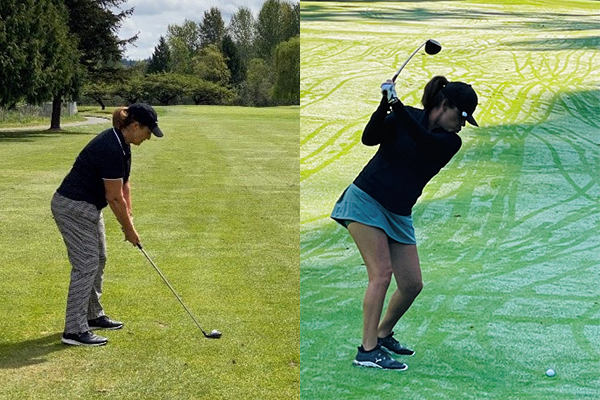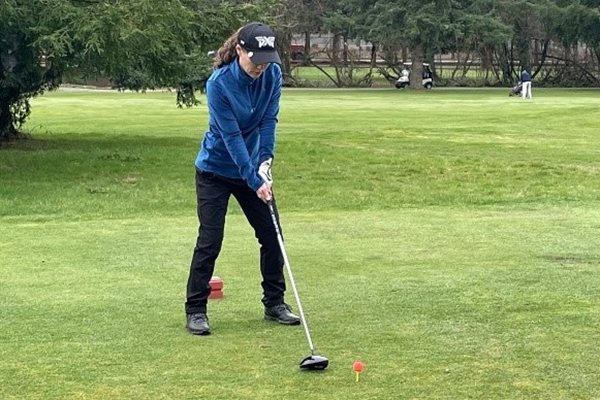We are four women who are new to the game of golf. We connected through the game, and have become friends because of it. We love the game, and want to share our experiences in finding our way, and encourage and empower other beginners to take it on and seize every opportunity for joy in it.
When looking at the word “etiquette” relating to the game of golf, we might want to start where it all started – with The Royal and Ancient Golf Club at St Andrews. The R&A’s Museum and Heritage Director A. Howe examined the ethos that defines the game, stating that golf and etiquette have traditionally gone hand-in-hand: “Observing a code of practice that places courtesy, respect, and fair play at the heart of the game…. and which has its origins in the earliest rules of the game.”
The term “etiquette” first appeared as a golf note around 1825 in Scotland. And to this day if we look at the Rules of golf, we often see Rules related to courtesy, for example: “Players should always show consideration for other players on the course and should not disturb their play by moving, talking, or making unnecessary noise.”

Macarena: As a beginner, it is very natural to feel anxious when playing with a new group of golfers, and often that can lead to trying to put yourself at ease by explaining your golf journey thus far – meanwhile, your fellow player is at the tee and trying to concentrate on his/her first drive. It is important to keep quiet and out of sight whilst waiting for your turn. (If you watch golf tournaments on TV, you will be amazed at how a crowd of thousands falls silent the moment someone approaches the tee, so treat your fellow players like the professionals.) Giving your fellow player space is important too, do not stand on the tee box until it is your turn, and for safety reasons do not stand in front of the person teeing off. I for one have been known to send my first drive embarrassingly close to a fellow player. Also, make sure your golf cart is not in the way of play.
Once you reach the green, it is equally important to be courteous to your fellow players – not standing on someone’s line, being aware of where you walk (occasionally you will see players performing an elegant “ballet step” so as not to tread on another’s line!). Also (if you want to look professional) if you notice a divot on the green you can use the “fork-like tool” you see in the golf store to ease up the dented turf. I had no idea what those tools were for, but now I do! Quiet on the green is also important as we each have our own level of competence and do not want to be distracted from our birdie putts (in my dreams). I was also made aware of not moving on the green while someone is putting, and not standing in their line of vision – this all may seem a bit serious, but it shows respect for your fellow players.
Another note regarding etiquette (the following would relate to “unnecessary noise” and although cell phones were obviously not around in 1825, they would fall under this category): please make sure that you keep your mobile phone use to a minimum; ALWAYS keep your phone on silent; and if you need to take an urgent call, remove yourself from the group so as not to distract others. Also note that on certain courses and private clubs, a member can be barred from the club if one of their guests breaks this rule.
If we follow the basic rules of courtesy, we should have many happy days on the golf course and not upset our fellow golfers.

Johanna: I love that golf is called a “gentleman’s game.” The meaning is not to exclude ladies, but to ignite thoughts of manners and chivalry. The game of golf requires that you hold other players in high esteem. It coincides with a life philosophy I try to adhere to of “treating others as better than oneself.”
I first learned golf etiquette from my husband and his father. Both gentlemen. The first few times I played I was not learning about technique so much as I was learning how to navigate a round without appearing ignorant or even rude.
One of the first things I learned was not to talk in someone’s backswing. That allows the golfer to focus on their shot without distraction. And if you’ve ever lined up a swing and a mower suddenly drove by, you know what I’m talking about! I also learned not to step in someone’s line while on the green. This prevents a fresh dent that could potentially circumnavigate a putt headed toward the hole. Replacing a divot in the fairway and fixing ball marks on the green is another way to leave the course prepped and in great condition for the people who follow behind you.
One more crucial thing I learned is to value everyone’s time on the course by playing ready golf. Ready golf simply means to pay attention to what you need to do next. Watch for where your ball lands (and watch for others you are golfing with), have your next club selection in mind if possible as you walk to your shot, hit your shot before helping a friend find their ball, don’t spend more than three minutes looking for a ball, and basically try to keep up with the golfers in front of you.
When golf etiquette is being practiced by everyone, a round is abundantly more enjoyable (and your score may even be a little better!).
Stephanie (@coldinseattle on TikTok): As I am just starting my second year, I’m learning lots of etiquette best-practices along the way. I know basic etiquette: Don’t talk when people are teeing up or getting ready to swing, and don’t walk on their lines. But when I was asked to join my first tournament with Kristina last spring, I had no idea there were other serious “tournament” etiquette best-practices. No more just swinging and hoping and praying! As I read the rules of the tournament over and over so I would not look like a complete joke and embarrass my girl Kristina, I even printed them out. Luckily, the twosome we were paired up with could not have been more helpful.
Kristina (@k_love_90 on TikTok): At the beginning of my golf journey, my husband and I played a lot of casual “twilight” golf and often it was just the two of us. Twilight golf is usually late afternoon, early evening when the golf course is less crowded. It’s a great time to learn about the game and as is often the case he was advising me on how to navigate the golf course. We talked about why I should park my push cart closer to the next hole when we are near the green, how to choose a shot as I walk to the ball, limiting my number of practice swings to save time, and generally how being kind to the golf course is good for everyone (fix divots, rake bunkers, handle the flagstick gently, don’t drag your feet on the green, etc.). Some of these practices are for safety (keep your distance when others are swinging) and some are to improve “pace of play” (don’t spend too much time looking for a lost ball, even your favorite one). It all seemed a bit “over the top” at the time and I’m sure I offered more than a few eye-rolls to some of his suggestions. But what I’ve come to appreciate is, as a golfer, how I manage myself around the golf course is often more memorable to my playing partners than a great tee shot or a long putt.
Who We Are

Johanna MacMichael: Prior to March 2021, I’d only played golf a few times with my husband in “scramble” games. During COVID, a neighbor friend recommended a women’s golf league and I started playing on a regular basis. I love this game! My handicap is 38.6.

Macarena Dearie: I was born in the UK, with the past many years living in various countries around the globe. I made a promise to my husband over 30 years ago that I would learn to play his beloved golf game if he learned to ski. And so here I am. My handicap is 40.0.

Stephanie Standifer: At 55 years old I started taking golf lessons during the COVID pandemic. My instructors encouraged me to play more regularly, so I joined my first 9-hole women’s league in the spring of 2021. My handicap is 26.4.

Kristina Laidler: I retired during the pandemic, so I’m returning to golf after years commuting and sitting behind a computer keyboard. I always wanted to play more, and better, golf but did not have the time until now. My handicap is 26.3.

